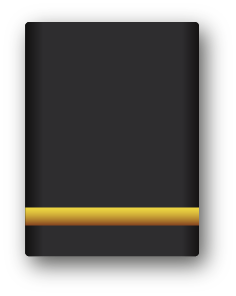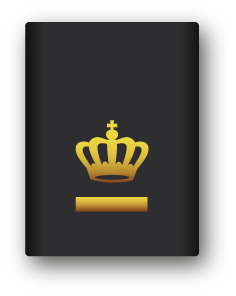Rank distinguishing marks
Below is an overview of the rank marks of the National Police. The grades are listed in Dutch. In addition, it is also stated what is generally the role of the personnel with the aforementioned rank.
BOA
An extraordinary investigating officer (boa) is an officer with investigative authority. ...
Staff from the departments Intake and Service and Arrestance Supervision in particular are BOAs
Other organizations such as municipalities, water boards, forestry, etc. also employ BOAs. They have limited investigative authority, but are not a police officer
Aspirant
The aspirant is still in training. He already has investigative powers during his sworn.
He needs this to be able to do the various internships during the course.
Surveillant
You often see the surveillant walking in the center of the city. He has to ensure that minor offenses, such as cycling, do not occur in the walking area. If that does happen, he can issue a ticket for it.
The invigilator does little to no office service and can carry all available weapons except the firearm.
Agent
What can the officer do? In fact, the agent is allowed to do everything that the police have been authorized to do by law. There is little or no limitation to that. You are a cop, you are a top policeman and you can go out into the street to fine, to correct collisions or to discuss arguments.
Of course, an officer also has a desk service. During that time he records declarations, puts them in the computer, records statements from suspects, draws up an official report, processes the collisions he dealt with the day before and speaks with the people who, for whatever reason, come to the desk.
The officer carries all the weapons that the police have in house, so the firearm, the handcuffs, the baton and the pepper spray.
Hoofdagent
The senior officer has almost the same powers as the agent. The difference is mainly determined by the prior education
Brigadier
The sergeant almost always has a coordinating task on a part of the police work.
At every desk there are a few brigadiers with coordinating tasks, such as traffic, crime, field laws, public order, environment.
The Sergeant makes plans for his task area that are then executed by the (main) agents. In addition, the sergeant also does the work that the (senior) officer does.
A sergeant can also become a local police officer and then has the police responsibility for a specific neighborhood.
Inspecteur
These are in charge of operational management within the teams. In addition, there are inspectors, who mainly work in a policy-based manner and therefore have frequent consultations with the mayor and other partners
Hoofd Inspecteur
This rank can have two functions. One is that he is in charge of the overall management of a team, the other is that he is a policy officer at the district office and therefore outlines the policy for the entire district. A district consists of several teams
Commissaris
The commissioner is the leader of a district. He actually does the same job as the inspector, but at district level. He is, for example, the person who holds performance reviews with the inspector to assess his performance.
A Commissioner can also be a policy officer, but at regional level. A region is a collection of several districts together.
Hoofd Commisssaris
The Netherlands has 10 regional units and one national. That is why there are also 11 chief commissioners as unit manager. The unit manager is of course the boss of the unit and ensures that all matters within the unit run smoothly and continue to run smoothly.
Eerste Hoofd Commisssaris
This is the chief of the Dutch police. The National Police is formed under his responsibility.
Police brevet
Only the rank distinguishing marks are worn on the operational uniform.
The dressed outfit is also provided with the so-called police .brevet. Over the years, this brevet has undergone some changes, as shown in the picture below.
Initially, the brevet was made of plastic. The subsequent versions were made of metal. The first and second version were still called the corps brevet, on which the name of the corps was stated. In the third version, the name of the corps disappeared and the motto of the police was replaced. Despite the fact that there was no National Police yet, this was intended to make the various forces look unambiguous














